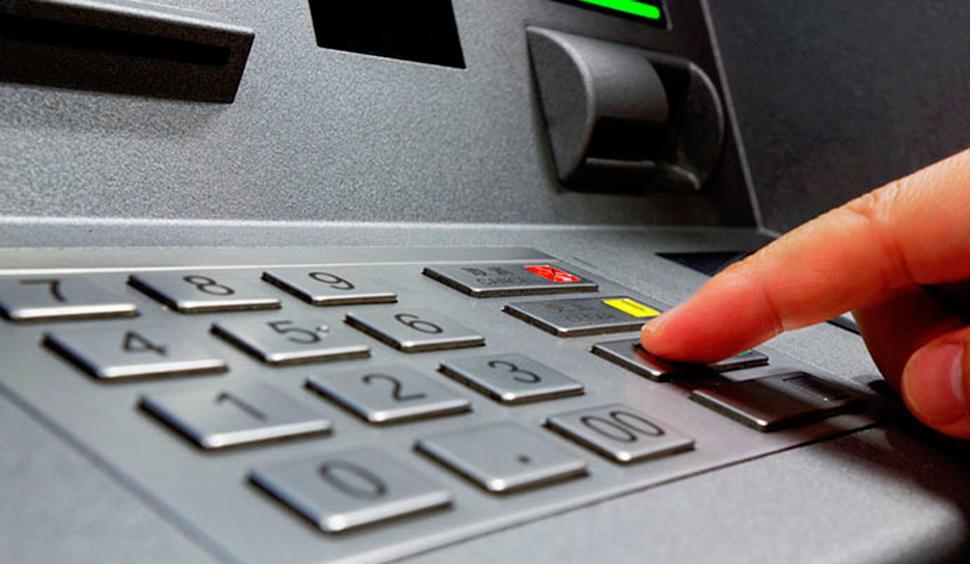It might surprise you to learn that the average ATM fee in America is $4.57. Considering that the minimum withdrawal amount is $20, you effectively pay 25% more if you use an out-of-network ATM with such a high fee.
Of course, your actual fees will vary depending on where you live and what type of ATM you use. However, it’s fair to say that these fees can really add up.

5 Easy Ways to Avoid ATM Fees
You don’t have to resign yourself to paying a lifetime of expensive ATM fees. Instead, use a bit of preparation to ensure you can access your cash for free whenever you need it.
As Ben Franklin famously said, “An ounce of prevention is worth a pound of cure.” In this case, a few minutes of preparation are worth a lot of cash savings. Ready to never pay ATM fees again?
1. Look for Banks that Reimburses ATM Fees
Even if your bank does participate in an ATM network, it’s also good to find one that reimburses your ATM fees. Some banks even reimburse international ATM fees.
There are a few ways they do this: some offer an unlimited reimbursable amount, while others might cap it out between $10 and $25 each month. So, how does ATM fee reimbursement work? Typically, you’ll still have to pay the fee upfront.
Your bank then credits any applicable ATM fees to your account balance at the end of your billing cycle. So, you generally have to wait a bit of time before seeing that money. Still, it’s much better than never seeing it at all! Interested in finding a financial institution that offers ATM fee reimbursements?
Banks and Credit Unions That Reimburse Out-of-Network ATM Fees
- Alliant Credit Union – reimburses up to $20 per month
- Ally Bank – reimburses up to $10 per statement cycle for ATM fees charged at other ATMs nationwide
- BankFive – up to $15 reimbursed each cycle
- Charles Schwab Bank – unlimited ATM reimbursements worldwide
- First Republic Bank – reimburses third-party fees worldwide
- Incredible Bank – automatically reimburses ATM fees
- Radius Bank – unlimited ATM fee reimbursements domestically
Top Banks and Credit Unions That Don’t Charge ATM Fees Within Their Network
- Capital One 360 – over 70,000 Capital One or Allpoint ATMs at zero cost
- Chase – over 16,000 fee-free ATMs
- Citibank – over 65,000 ATMs fee-free to customers
- Current – over 40,000 fee-free ATMs
- Fifth Third Bank – over 50,000 fee-free ATMs
- PeoplesChoice Credit Union – over 85,000 fee-free ATMs
- PenFed Credit Union – over 85,000 fee-free ATMs
- Upgrade – over 55,000 ATMs
- Wells Fargo – free access at over 13,000 ATMs
As you can see, there are plenty of financial institutions offering fee-free options that allow you to avoid ATM fees. Many of these bank accounts also come with no monthly fees. You can narrow down the list by reviewing other account features. You should also take into account how much foreign travel you do.
2. Plan in Advance
If your day entails going to Target or shopping online, it’s safe to assume you won’t need cash. But if you’re headed out to a less mainstream operation, check ahead to see if the business accepts debit or credit cards.
It’s as simple as a quick Google search on your phone to check out their payment options. If there’s no website available, see what people have to say on Yelp or Facebook. Message or call the business to check their policy in advance. While many small businesses use their smartphone or tablet to process electronic payments, you shouldn’t assume they all do.
This is especially true if you’re visiting a small operation. A farmer’s market or pick-your-own-strawberry field very well may only accept cash. Food truck rallies, small outdoor concerts, and cheap (but tasty) local dives may operate on a cash-only basis.
These are exactly the types of businesses that need loyal customers like you to support them. But when working with limited funds or limited Wi-Fi, accepting cards may not be an option for these businesses.
Do them and yourself a favor by checking acceptable forms of payment ahead of time, especially when it comes to local businesses. It might be easier to go to a big box store. However, it won’t be half as much fun or have as large of an impact on your community as supporting the little guys. Just prepare in advance, so you can avoid taking a U-turn to hit up an ATM once you’re there.
3. Keep Backup in Your Wallet
It’s perfectly reasonable to attempt to minimize what you carry around in your wallet. After all, you’re probably also saddled down with a bulky smartphone and keychain.
Amidst your driver’s license, debit cards, credit cards, health insurance card, and whatever else that lives in your wallet, you should also carry some backup cash. But, of course, you probably don’t want to walk around carrying a thick wad of money in your wallet.
The chances are low that you’d ever get robbed, but it’s certainly not impossible, especially if you live in a large city. Still, keeping a $20 bill in your pocket can save you a huge headache at some point down the road.
That amount should most likely cover a cab ride, lunch, or other last-minute cash expense you might encounter. And if you do happen to lose your wallet for some reason, you’re not missing a massive chunk of change.
Carry a Blank Check
Another great way to avoid last-minute trips to the ATM is to carry a blank check in your wallet. This gives you a little more leeway than a $20 bill because you can write out the check for however much you want.
If you happen to lose your wallet, or it gets stolen, you’re not out any cash. Of course, you might want to stop payment on the check number, but even that may not be necessary since you didn’t sign it.
Not everyone still accepts checks because of the chance of someone writing a bad one. But in many instances, it can save you time, money, and the aggravation of having to search for an ATM. Adding a simple blank check and $20 can go a long way in ensuring that you’re prepared for any situation that requires a certain amount of cash.
4. Use Your Debit Card to Get Cash Back
A simple but often forgotten way to avoid paying ATM fees is to get cashback on a store purchase. You’ll need a debit card rather than a credit card for this tactic, but otherwise, it’s pretty straightforward.
Make a low-cost purchase at a gas station, drugstore, or other convenient retailer and request money back from your bank account during the payment process. However, there are a few conditions that come with this strategy.
First, it’s not technically free, since you do have to pay money to get your cash. But you do actually get something for that money, unlike an ATM fee.
In addition, note whether the establishment has a minimum for either a debit purchase or getting cashback. Ideally, you can get away with buying a cheap drink or snack for one or two dollars. At some places, however, you have to spend $5 or more to use your debit card.
Cash Back Limits
Another factor to consider when getting money through cashback is that there may be a maximum amount you’re able to receive. For instance, CVS only allows for $35 as cashback.
If you need more than that, you may have to visit a few different stores. That can quickly add up if you’re making small purchases at each one. While these limits can be annoying, there is an upside to using cashback for money rather than an expensive ATM.
That’s the flexibility you have in the types of bills and coins you receive. While ATMs usually only dispense cash in $20 bills, you can request any combination of money with cashback. It’s also convenient if you only need a small amount and don’t want to (or can’t) withdraw in $20 increments. Before you hit an ATM, see if a retail store can meet your needs with cashback.
5. Check Your Bank’s ATM Network
If you find it necessary to track down an ATM, look for one in your bank’s network. This allows you to avoid ATM fees from two different parties. How?
Unfortunately, when you use an ATM that’s out of your bank’s network, you’re typically charged twice: once by the company operating the ATM and once by your bank. It’s a double whammy that really hurts your bottom line. So first, look to see if your actual bank has a branch location with an ATM near you.
This is the simplest way to ensure you won’t incur any extra charges. If there are none nearby, check the back of your debit card to see if any other ATM networks are listed. You can also download your bank’s app to use an ATM locator. It’s a quick and easy way to find a no-fee ATM — plus, it’s usually free.
The Largest ATM Networks
Some of the most common ATM networks include Allpoint, MoneyPass, and Co-op Solutions. Allpoint, for example, has 55,000 ATMs in the U.S. and ATMs in Canada, Puerto Rico, the U.K., Australia, and Mexico.
So, you can enjoy fee-free cash in some popular international destinations as long as your bank or credit union participates. MoneyPass is only found in the U.S. and Puerto Rico. It’s in many convenient locations, including Walmart.
Co-op is a similar service that focuses on credit union members. It has more than 30,000 ATMs and 5,000 shared branches throughout the nation. Participating credit union members can easily access fee-free money just about wherever they are.
Ask your bank or credit union where you have your checking account if they participate in any of these ATM networks. If they don’t, and you frequently use ATMs, it might be time to open a new bank account.
Final Thoughts
ATM fees can be especially high when traveling abroad. So, having a bank account like the Charles Schwab Investor Checking or SoFi Money can result in a lot of savings. Not to mention, some of them act as savings accounts and have similar interest rates, so you can actually earn money too.
ATM fee reimbursement isn’t the only feature you should consider when choosing a checking account. However, it could be the most important if you frequent ATMs often.




